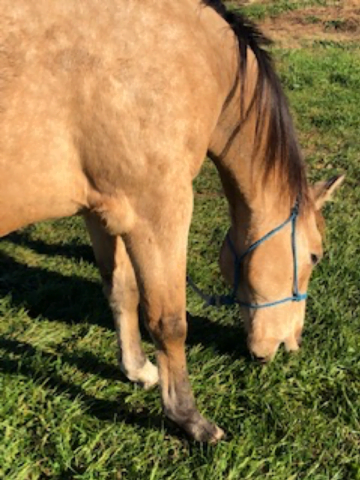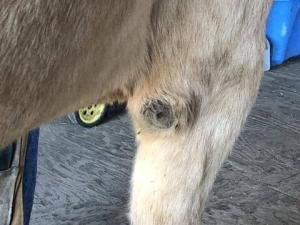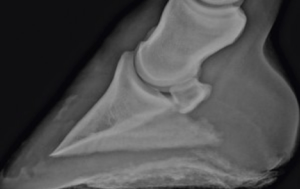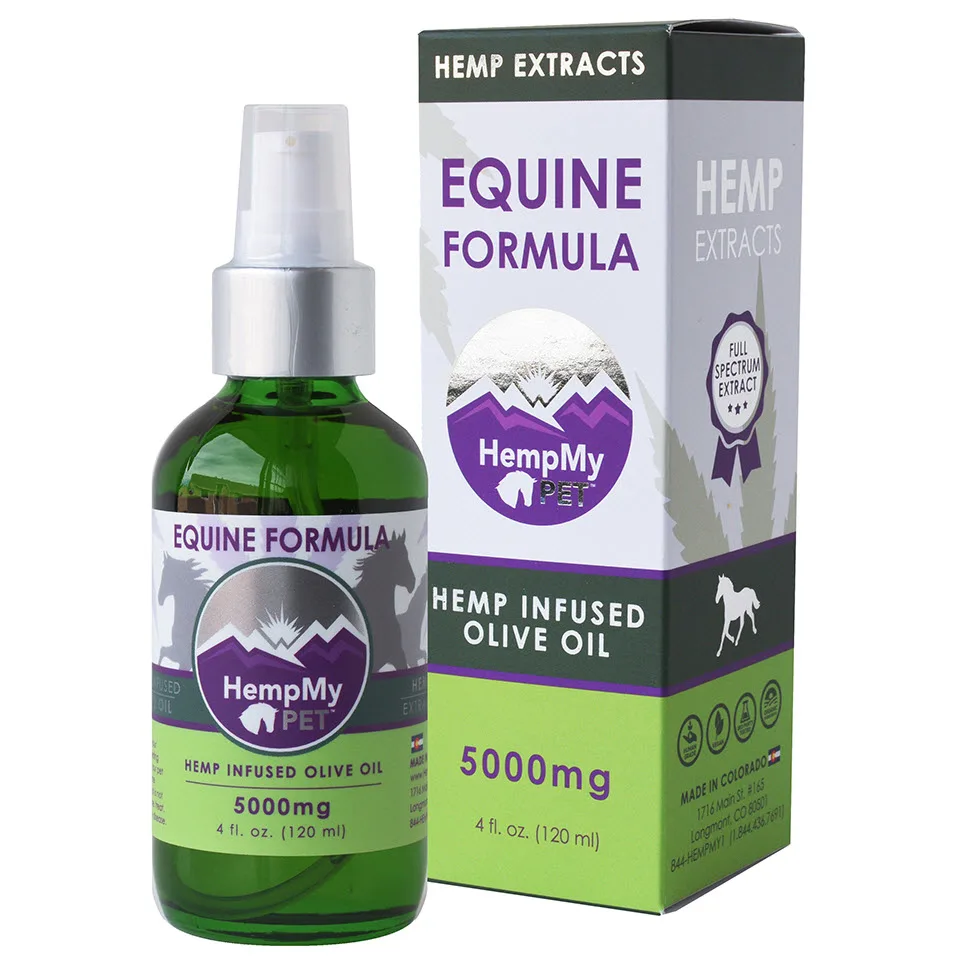LAUREL PALERMO AND TOM RENZETTI FOUNDED NORTH SHORE HORSE RESCUE IN 2002.
We started out with a small boarding facility, known as Gold Rush Farms, of about twenty horses including a couple of personal horses.In 2003 we rescued our first horse, Phoenix. The five-year-old mustang mare was with foal and neglected. After educating ourselves about the abandonment, abuse, neglect, and slaughter contributing to the ongoing problem of unwanted horses, we wanted to be a part of a solution. Our experience with Phoenix led our passion to eventually become a 501(c)(3) not for profit organization. At this time, we have 32 horses on our farm. Most are rescues and some were adopted or they are now boarders. However, almost all the horses have some type of health issue that could benefit.

SAY HELLO TO CISCO.
Cisco, a Buck Skin quarter horse, and is around 20 or 21 years old. Imagine spending 16 out of 18 years working as a nose to tail trail riding horse at a camp for at risk youth. After becoming lame with Navicular Disease and unable to be ridden he was going to be sent off to auction.
Unfortunately, horses that are sent to auction are slaughtered. This horse’s future was slim until a girl at the camp made the right decision by bringing him to North Shore Horse Rescue and Sanctuary. Now, Cisco is the class clown of the farm. His personality wins over everyone.

HOWEVER, CISCO HAS SOME HEALTH ISSUES.
Heaves is an allergic-based disease that compromises his ability to breathe, similar to the way asthma affects humans. When Cisco is exposed to allergy-producing substances in the air, such as dust and pollens, cells in his lungs react by releasing chemicals that cause air-passage linings to swell, thicken, and produce mucus. When he breathes, air gets trapped within these thickened passages. He then must use extra effort to expel this trapped air.


ANOTHER CONDITION THAT CISCO HAS IS A CAPPED ELBOW.
On one of the included photos you will see a large, movable swelling at the point of the elbow. These swellings are filled with fluid and occur due to trauma from the heel of the foot hitting the back of the elbow when the horse lies down. The trauma of the heel causes a bursa or fluid-filled sac to develop at the back of the elbow, and a similar condition can occur at the point of the hock called a capped hock or the front of the knee.
Cisco also has what is called Navicular disease in horses is a progressive degenerative condition
involving the navicular bone (which is located behind the coffin bone in the hoof), the bursa and the deep digital flexor tendon (DDFT) of one or, more commonly, both front feet.
navicular is not actually a ‘disease’, it is a syndrome of abnormalities.
Cisco is an amazing horse that truly deserves to be the focus on your trial. If you have any questions, please reach out to me. I also have some video I am preparing to send to you as well.
ELBOW IS LOOKING BETTER
“Hello, it is going well. Cisco seems to be better, He was even bucking the other day. I have to send you the video of him first trying it. He ate it right up”
Equine Products
Menu
Useful Links
Newsletter
Copyright ©2024 HempMyPet. All Rights Reserved. Made with 💖 by Hire X Studio™.

